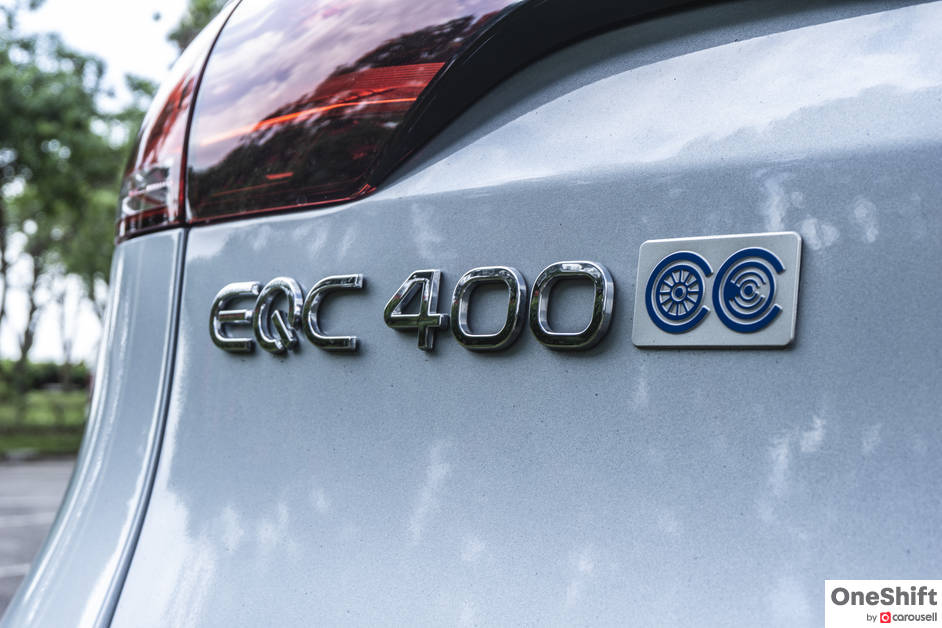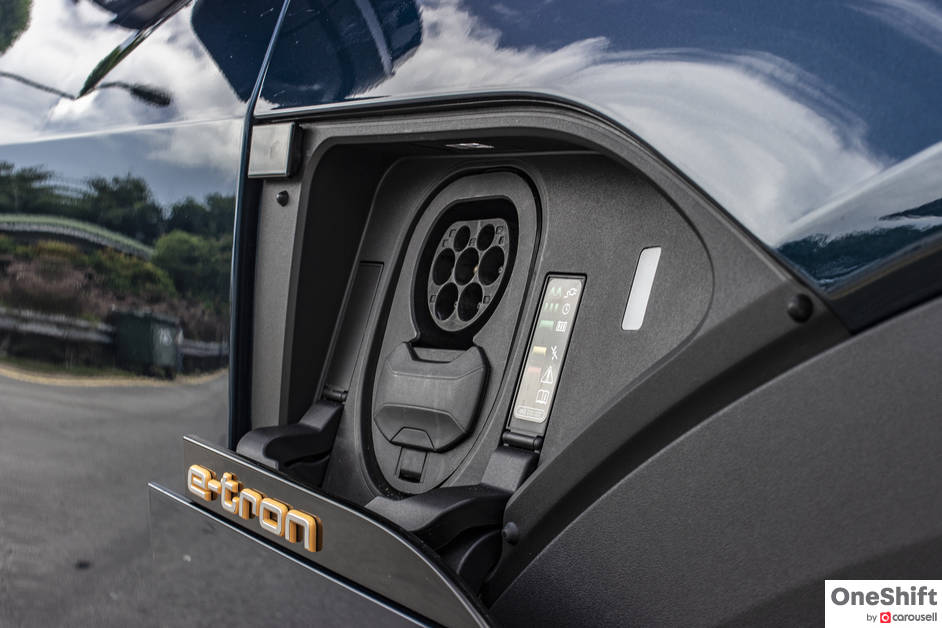Powering EVs - What to Expect From The EV Revolution
The electric revolution seems to be well underway, with the Singapore government issuing a sort of blueprint for the development of electric charging infrastructure, which will be carried out in phases across the next 5 to 10 years. However, there are still many facets to an electric car environment that we need to consider, the foremost being the issue of electrical charging. So can we make this work? What can you expect in the meantime?

The electric revolution seems to be well underway, with the Singapore government issuing a sort of blueprint for the development of electric charging infrastructure, which will be carried out in phases across the next 5 to 10 years. Personally, this is all very exciting, as it does seem like the beginning to a new era of personal transportation, one that carries many new possibilities, and many exciting new car options from our favourite automakers. However, there are still many facets to an electric car environment that we need to consider, the foremost being the issue of electrical charging. Currently, electric car owners are given a purpose built wall charger for their car, which is handy if you live in a landed property with your own parking space. However, if you live in a HDB flat or a condo, you’ll have to rely on more communal charging facilities. The availability of said communal charging facilities is however contingent on how “forward” looking your respective estate planners or management committees are. So can we make this work? What can you expect in the meantime?
Addressing the elephant in the room, we can all expect more communal charging stations in HDB estates, and according to the Land Transport Authority’s (LTA) Electric Vehicle Roadmap, there are 8 HDB estates that have been earmarked to receive changing points in every HDB carpark. These estates are Ang Mo Kio, Bedok, Choa Chu Kang, Jurong West, Punggol, Queenstown, Sembawang, and Tengah. These estates are supposed to be fully equipped by 2025, with every other HDB town expected to receive the same upgrades by 2030.

Once up and running, the charging network in these towns should in theory provide a car to charging station ratio of 5 cars to 1 charging station. Considering Singapore’s driving environment, coupled with the fact that an average EV is expected to have a range of about 400km per charge, it means that each EV will likely need a recharge every 4-6 days. This makes the 5 cars to 1 charging station ratio quite desirable and quite realistic from a user’s point of view (and provided that users are considerate enough not to hog the station - which we believe will happen). In theory, if this ratio can be achieved, we should not expect overcrowding for the charging stations, but I guess it all also depends on exactly when users choose to charge their cars. If everyone has the same idea of doing an overnight slow charge, there might be some over-subscription yet, with day time non-peak hours seeing a correlation of under subscription. It remains to be seen if there will be off-peak vs peak charging rates that might help to diffuse the concentration of users across the day. Aside from charging stations in housing estate car parks, operators such as Shell, Greenlots, and SP are already running fast charging services islandwide, at selected petrol stations, malls, office buildings, and industrial estates. It would be interesting though, to see how Tesla’s arrival into the Singapore market will add more charging stations to the islandwide network, and also if Tesla’s chargers will be exclusively for Tesla use, or if they will be made available for other makes and models of EVs.
Unfortunately, the push for the rollout of electric charging infrastructure in private estates such as condominium carparks seem to be less potent as there will be no government-induced mandate to secure a government-announced target. This means that the adoption and installation of an electric charging infrastructure will likely depend on how forward looking the respective management committees of each condominium complex chooses to be. There is a government grant scheme that has been announced, which will subsidise the installation of electric chargers in non-landed private residences until the end of 2023 or until subsidies for 2,000 chargers have been claimed by the various condominiums. Loosely speaking, the grant will co-fund 50% of the installation of the chosen chargers, subject to a cap of $4,000 per charger. The 2,000 co-funded chargers will be granted on a first come first served basis.
So generally, the EV roadmap seems like it's well underway, and the tune is one that sounds largely positive and encouraging. I am of the opinion that while Internal Combustion Engine (ICE) vehicles tend to be quite standard in terms of format, EVs have the potential to be very different from one another - and in being so, could offer consumers many interesting options to serve very specific needs. Simply put, I could imagine a situation where a family could perhaps own two smaller, purpose built urban EVs, as opposed to one large ICE vehicle that does a little bit of everything. This would be possible because electric power (or battery power) is far more modular in its application than ICEs, which by extension, means that automakers could potentially produce EVs that are more targeted, and more suited to specific consumer usage needs.

Aside from Tesla subtly announcing its entry into the Singapore market by beginning work on their showroom at Raffles City and offices in Toa Payoh, there is genuine excitement surrounding luxury EV options, showing consumers that this EV revolution need not be drab and boring - that it can also be quick and luxurious. When hybridisation and the first wave of mainstream EV options hit the market, it was dominated by the Japanese. While it did pave the way for the concept to take shape, nobody was particularly excited about it were they? As a proponent of continental cars myself, I found the prospect of potentially having to drive a Prius extremely daunting - And I wasn’t the only one. American movies made fun of the Prius too, where for a period of time, it became the de-facto drive of the “loser” (cue Brian Griffin from Family Guy) or uncool character in the movie. However, things changed when we were introduced to the concept cars from Volkswagen, Mercedes-Benz, Audi, and BMW. There was suddenly more style, more finesse, and more glamour in the concept of an EV. Thanks to the Mercedes-Benz EQC commercial featuring The Weekend, we are reminded that even if we were to switch over to an EV, we won’t just be driving electric, but rather, we’d still be driving a Mercedes-Benz - Damn straight!
That said, I feel that if you look past the official spew by the authorities, there are a few key considerations that are yet to be explored, and some questions left unanswered - which may have an impact on whether or not people actually end up buying EVs for day to day usage. You see, for the entire EV ecosystem to thrive and be sustainable, you need two things - You need willing buyers and adequate infrastructure. Unfortunately, these two things have a little bit of a chicken and egg relationship that is either helped along or hindered by government policies surrounding things like road tax. If the government does not stop taxing electric vehicles based on power output, in effect lowering the road tax for EVs, then nobody is going to see the financial benefit over an ICE vehicle. If nobody sees the benefit, then nobody will buy an EV, and if nobody buys an EV, then there will be an inadequate amount of people to use the EV charging stations. When not enough people use the EV charging stations, the private operators (yes, they will be run by private operators who bid on a government tender to run these charging services) running these charging stations will eventually pull out, leaving the infrastructure bare again. And we are back to square one - If there are no chargers around, how can anyone buy an EV. For me, the road tax issue, if not adjusted adequately to provide an attractive proposition that favours the adoption of EVs, could be the one thing that derails the entire EV roadmap. While originally implemented as an emissions tax (we followed the UK system), the road tax suddenly evolved into a power output tax the moment EVs came onto the scene and the LTA realised they wouldn’t be able to tax EVs. A little bit of a poor move, considering that the UK road tax system, whom we have modelled ourselves after for the better part of 50 years,has held true to the emissions based tax, and does not charge EVs a road tax.
The other issue that I foresee, will be less detrimental to the EV roadmap, but may vex some individual consumers living in non-landed private residential estates. When the government announces a plan to roll out charging stations in HDB estates (especially in the newer estates with BTOs), a large number of people will likely benefit, or feel like they could benefit from it. This is because the demographic in such estates are fairly homogeneous. Young, educated, tech-savvy, and willing to accept change - The kind of people who would buy an EV. Conversely, an ageing condominium complex with an older, more reserved demographic (the kind that would vote against an en bloc sale), is far less likely to care about whether or not the estate upgrades its infrastructure to support a charging network. Through my own research, I’ve discovered that when a condominium’s management committee is considering whether or not to install charging stations, the first thing they do is to seek census from their residents by asking if they intend to buy an electric vehicle in the next 3 - 5 years. What this means is that if not enough people say yes, the motion is moot, and is unlikely to even reach a voting stage at the next AGM. To make matters worse, many developments in prime rental areas are filled with tenants and not stay-in owners. When the tenants do not drive, and the landlord owners don’t really care either way (because they aren’t living there anymore), it just adds more inertia to the task of getting the charging stations approved and installed.

I’m not saying that all condominiums will be like that - What I am saying is that if you are thinking about moving to a private condominium, and are seriously considering purchasing an EV, you might want to think a little bit harder about where you are moving to. There are many newer condominiums with a younger, professional demographic that might see the point and benefit of an electric revolution, and might be keen to be a part of it as well, but I would be wary of the older estates that are occupied mostly by retirees, or estates that are mostly tenanted. Living in a condominium myself, I have seen first hand that it is difficult to get a bunch of random people with such differing backgrounds, who just happen to be living in the same estate, to miraculously pull in the same direction on something and agree.
Recycle... Reuse... Re-something. Another way to go green, is to keep using the same car. How about getting a quality used one? Sorry for the hard sell!
Credits:


Get the Best Price for your used car
from 500+ dealers in 24 hours

- Convenient and Hassle-Free
- Consumer Protection
Transparent Process
With No Obligation








